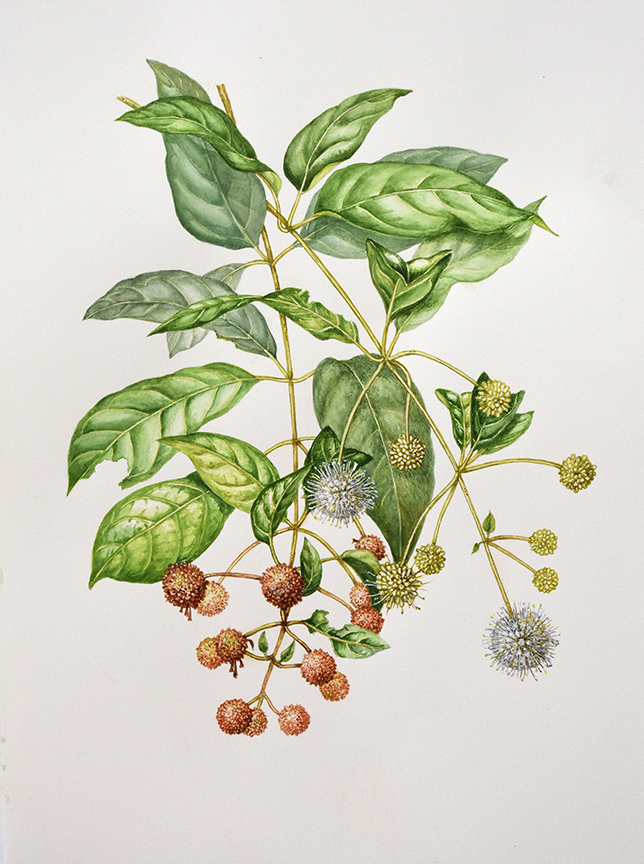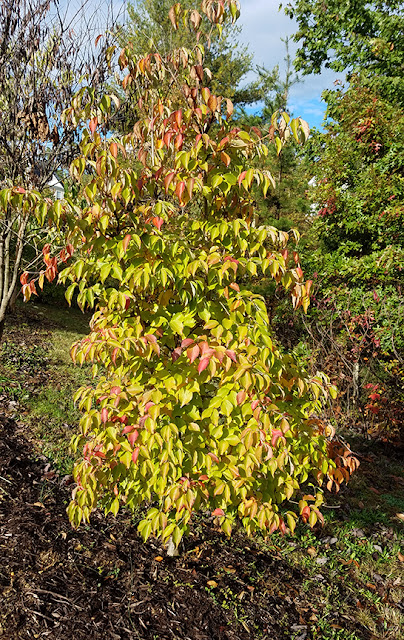 |
| Last week's pages: oat grass, dried hydrangea leaf and 'Nelly Stevens' holly. |
This past October I started a new botanical journal after seeing two presentations on nature journals by artist Lara Call Gastinger. She did one presentation for our BASNCR chapter Zoom meeting and another at ASBA's annual conference. I'd tried doing nature journals on several occasions before, but somehow, after a few months, I'd get involved in other things; it became harder to find the time and interesting subjects for entries, and eventually I gave up on these altogether.
Lara's concept that one need not fill up every bit of space on a page, but come back to use the empty space in subsequent years, freed me to think of a nature journal in a different way. The idea is to establish calendar dates for each page, and simply do as much as one feels up to on those pages. With this in mind, I decided to attempt a nature journal again, and try to have fun with it instead of making it a chore.
So, every week I've been sketching a little of whatever plant material I find in my garden or during my walks or wanderings. At this time of the year much of what I find is dried leaves or seed pods, with the occasional evergreen, or plants from my indoor garden. Last week I drew a sprig of the 'Nelly Stevens' holly, a curled-up leaf from one of my hydrangeas, and oat grass, all from my garden.
 |
| Bearss lime flowers, Beautyberry (Callicarpa amaericana) and Christmas cactus (Schlumbergera sp.) |
Generally I use pencil to do a very loose outline of the object first, then carefully draw it with more detail in ink before erasing the pencil guidelines underneath. The pencil scribbles help me to get the movement and proportions of the drawing more accurately. After the ink drawing is complete, watercolor pencils or a mixture of watercolor with watercolor pencils give it color. Notes about the plant with botanical name if possible, and occasionally notes on the pencil colors used finish up the entry.
On the previous week, I sketched blossoms of my Bearss lime tree wintering indoors, a tiny sprig of Beautyberry collected at Summerset (the site I visited for my painting of the historic property in Delaplane), and a flower from my Christmas cactus. The Christmas cactus produced four lovely flowers this year, and has a few more buds--last year the plant produced only two flowers.
 |
| Witch hazel flowers, Australian red finger lime, and Brassidium orchid flowers. |
I try to draw the material life-size, and one of the challenges is how to arrange the sketches in the notebook pages attractively so that they flow across the pages. Using color to unify the two pages is one way to accomplish this, but the design still needs to be taken into account. Do I bring in a branch from the left or right side, coming from the top of the bottom of the page? To draw or not to draw across the fold? Each set of pages is different, that's where the fun comes in!
 |
| Fir tree sprig, cedar apple rust gall on Virginia juniper, Virginia pine cone. |
I'll share more pages from my botanical journal in future posts throughout the coming year.














































